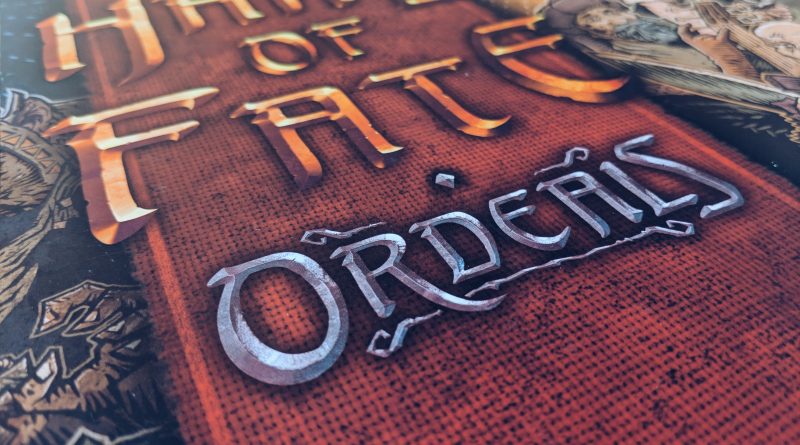Hand of Fate: Ordeals
Back in 2015, a little studio named Defiant Development released a video game that brought elements of the tabletop world into the digital world. It put the player on the other side of the table from the game’s mystical dungeon master, The Dealer. As players made decisions and encountered… encounters… the cards they played had effects in the game world. If you haven’t played the series, it’s one of the good ones.
In May of 2017, the Defiant crew teamed up with Rule & Make, and launched a Kickstarter campaign for a tabletop adaptation of Hand of Fate. This seemed like a natural progression from the video game series. Of course, as a big fan of the original games, I was intrigued. Hand of Fate: Ordeals is a deck building adventure game with competitive and solo modes, and can be played with anywhere from 1 to 4 players. I’ve been following the development of Hand of Fate: Ordeals for a while now, and I finally have some plays under my belt. Let’s take a look.

Production quality on this one is pretty good. All of the cards are printed well with good consistent colors.The game comes with a fantastic insert that has a place for everything and then some. Despite the really great insert, cards still find their way to strange places when the game is stored vertically. It is worth noting that the player boards were ever so slightly bent in my copy, which is likely the main contributor to the card problem.
The miniatures in this game are amazing. I don’t paint minis and I still want to paint these things. There’s one matching each player board, and an additional one for the King of Skulls. I was a tad disappointed that the base game only came with one of the four available King miniatures, and left cardboard tokens for the others. The same holds true for the solo campaigns – we get one of the available four, which are tied to the four suits of enemies found in the game.
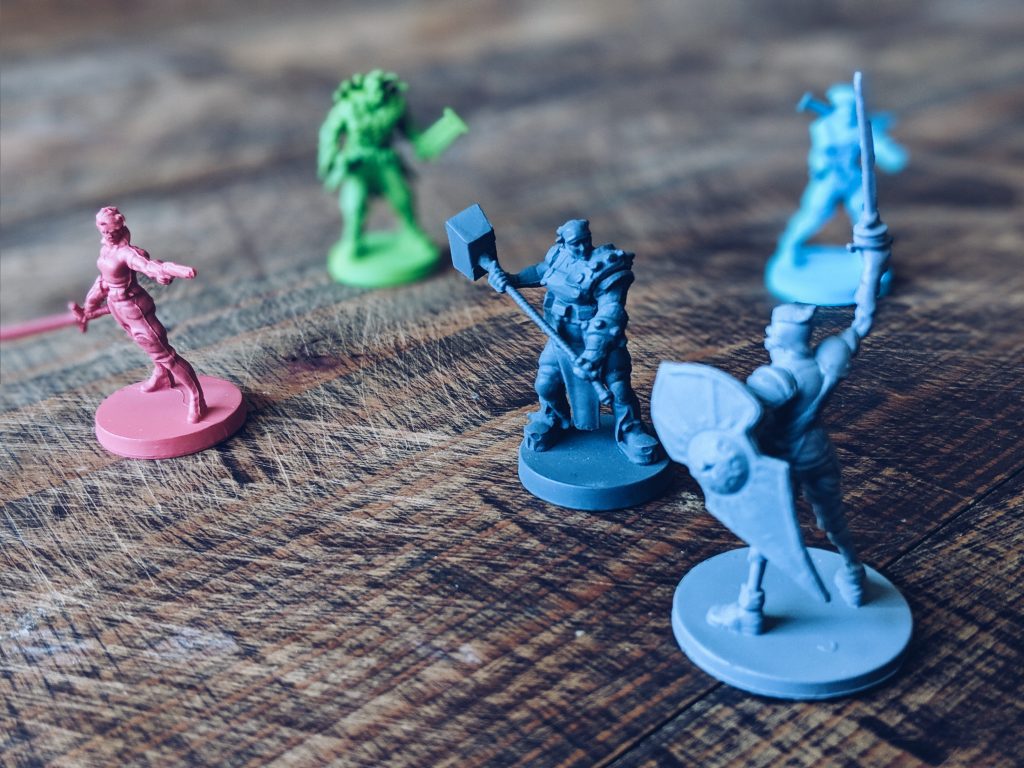
At first I didn’t understand why it bothered me, I mean, games have expansions right? After some thought, I figured it out. It felt baity to me. Let me explain. As it is, the base game feels incomplete by design. Why does the King of Skulls have a miniature, but none of the others do? Well the answer is they actually do, but they are part of an expansion. Don’t misunderstand, I’m not against expansions. Heck I’m not even against expansions that release at the same time as the base game. I am against intentionally making a game feel incomplete without an expansion. I think a better approach would have been to leave all four King miniatures and solo campaigns in an expansion. I honestly think that was the original intent, as the King of Skulls still has a cardboard token like the others. Yes, you read that right. I think less content in the base game would have felt better in this case.
Ian O’Toole served up some absolutely stunning artwork yet again in Ordeals, which should come as no surprise considering his portfolio. The overall aesthetic of the game is spot on – it definitely fits right in to the Hand of Fate world. I did find it a little odd that, in a game with such amazing components and artwork, there are some plain wooden cubes for tracking encounters. Don’t get me wrong, the cubes are good quality, they just seem a bit out of place to me.
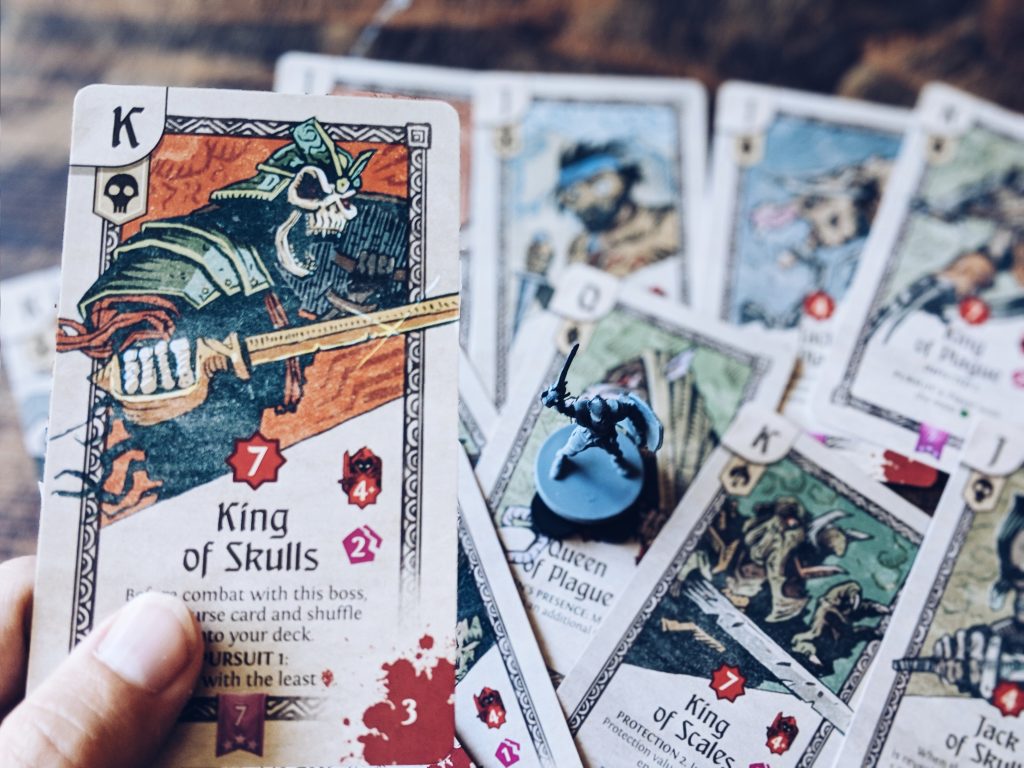
Setup isn’t overly involved considering the scope of the game. Sort and shuffle a number of decks, set them in their respective spots, give everyone their player board and miniature, and a few tokens. Finally place a bunch of common resources in their respective pools. We found it particularly useful to use some third party containers for the resources – I personally use https://amzn.to/2uGYWHh these(affiliate link), and I find they work pretty well for my purposes.
The rule book is pretty detailed, and does a relatively good job at explaining the game flow. There are a few things that needed clarification, but for the most part this updated rule book I found on BGG answered those questions. I will say I’m a “pull the tag off the shirt then try it on” kind of guy – meaning I don’t read the whole rule book before I start setting up. I mention this because the rule book isn’t entirely clear on what goes into each deck until you’ve read the whole setup section. As a result, I had to reshuffle and re-sort the dealer’s deck a few times before I got it right. After the first game, just the graphics on the board were enough to get a second game going quickly.
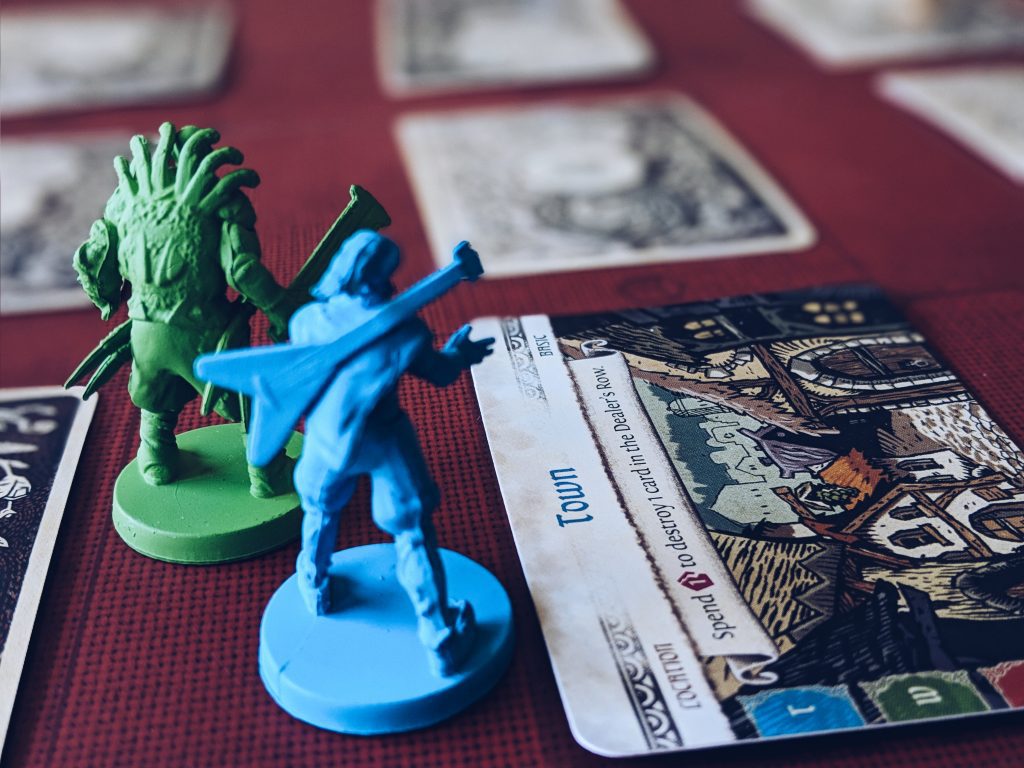
In Hand of Fate: Ordeals, players will take on hoards of monsters generated by the encounter deck in an attempt to be the player with the most Fame. The game is divided into three acts, which the rules call “levels”. Each level has an increasingly difficult Royalty (boss) that must be defeated to move to the next level. The game ends after the last Royalty, the King, is killed. The player with the most Fame wins.
As I mentioned, Hand of Fate Ordeals is a deck building adventure game. If you’re familiar with deck builders, a lot of the mechanics here will feel very familiar. All players start with the exact same 10 card deck, shuffle it, and draw five cards. Over the course of the game players will be spending Effort (the game’s currency) on new cards, most of which get added into the discard pile. When a player’s deck runs out of cards, the discard pile, along with all newly purchased cards, gets shuffled into a new draw deck. I absolutely love deck building, especially when the game gives ample opportunity for fine tuning by removing unwanted cards. When executed properly, deck building gives a really nice sense of progress and power increase over the course of a game. Ordeals does this very well.
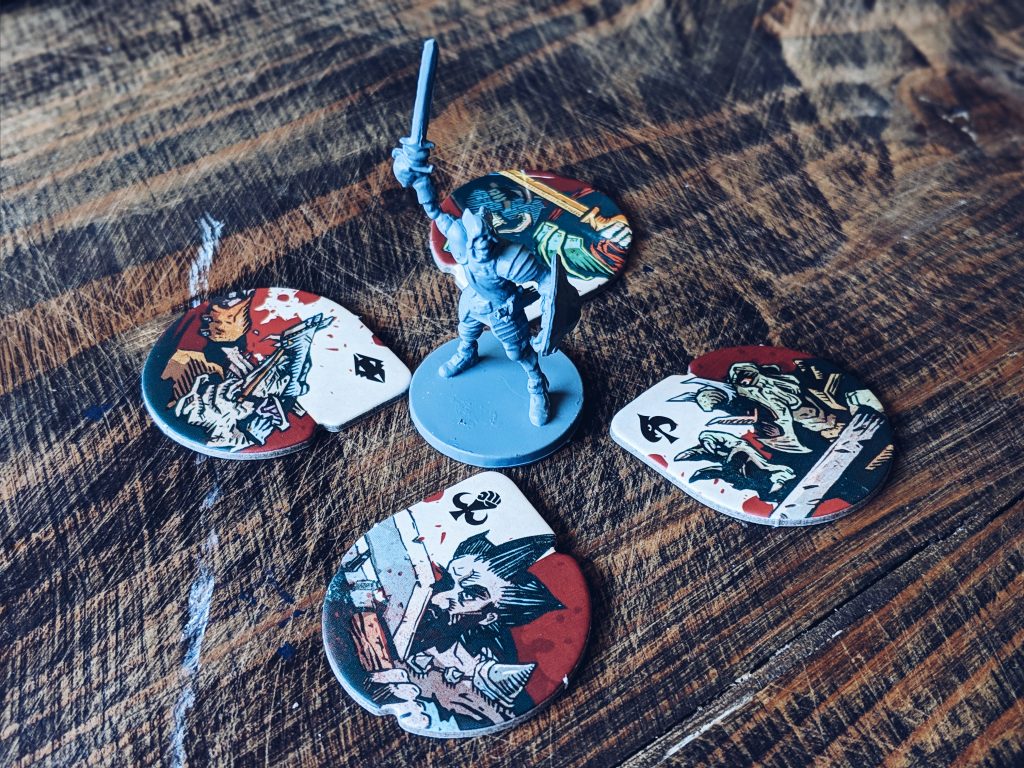
Turns are broken into four steps, which can be remembered with the handy acronym F.E.A.R.
Fatigue – Players spend Effort to maintain “readiness”, which basically means they can keep a number of modifier cards attached to their weapon. If they don’t, the weapon reverts to its default stats.
Explore – Players can spend food to move around the board, reveal new locations, and interact with different encounters found in those locations. Players don’t necessarily have to move to interact with an encounter.
Acquire – Players can spend any remaining Effort to buy cards from the Dealer. Equipment gets immediately equipped upon purchase, while all other purchases go directly into the discard pile.
Rest – Players discard all of their unequipped cards, even ones that have not been used, and draw back up to five cards.
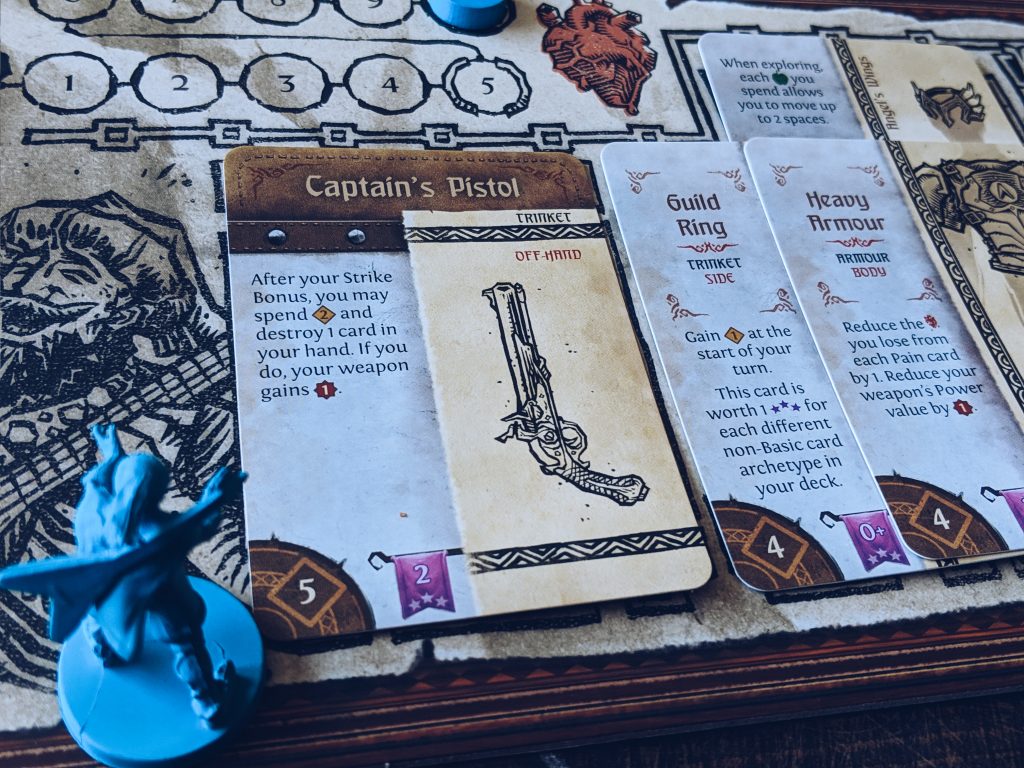
One of the more unique things about the game is how it handles combat. Over the course of the game, you’ll pick up weapons. These weapons have a base power value, but can be modified by bound attack cards and strike bonus cards (which get added when combat starts). I’ll explain. Each weapon card has a binding limit determining the maximum number of attack cards that can be bound to it. To maintain combat readiness each turn, players have to spend effort. If they can not or choose not to spend their effort in this way, the bound cards are lost.
I love how this simple combat readiness mechanic simulates getting pumped for battle. You’re expecting conflict, your adrenaline gets going, and if you don’t stay focused and exert effort, things kind of fizzle out. It creates some interesting and impactful decisions. Do you want to get that next shiny upgrade from the dealer, or should you conserve your effort to stay ready for a potential battle ahead?
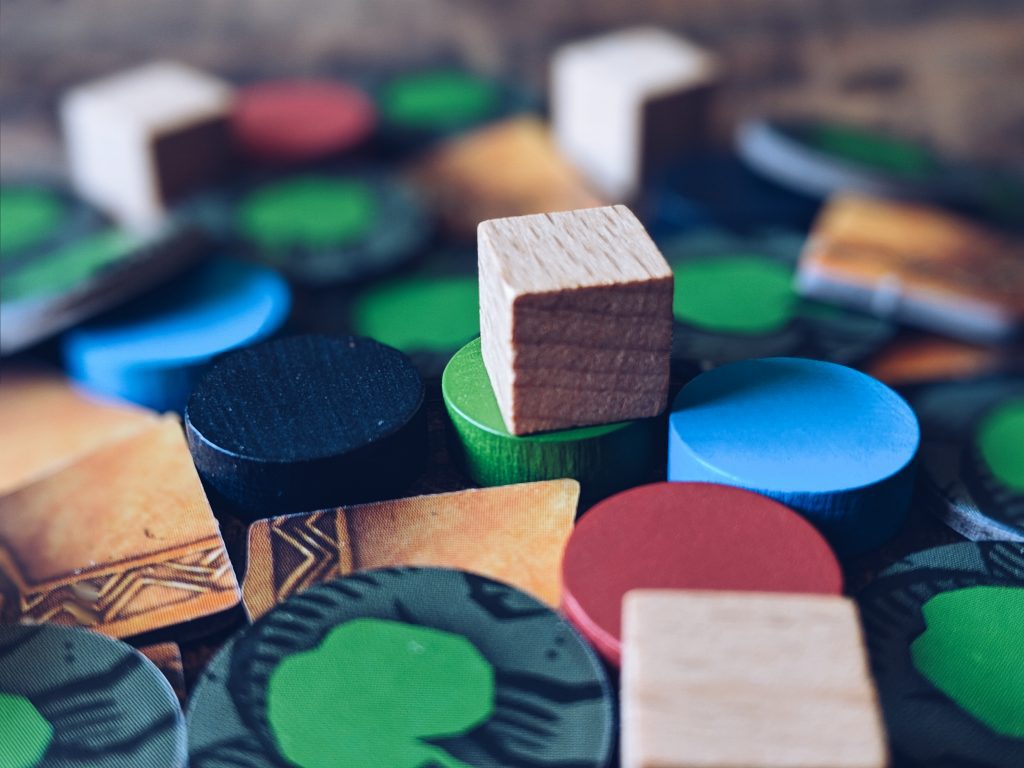
Beyond that, you won’t even be able to get to a combat encounter without moving. To move, you’re going to need food. To get food, you’re going to need cards in your deck that generate food, which means cards in your hand that don’t help you in combat. You get to choose most of your battles, but not all of them, so the chance you might need attack cards and get a hand full of food is a real possibility. It’s a delicate balancing act.

I loved the Hand of Fate video games, so I may have a bias, but I really like Ordeals. It is far from perfect. There are lots of little annoyances that I picked up mostly because I played the game as a reviewer, but the overall experience of actually playing the game is good. There are great tried and true mechanics alongside innovation, and most of it pays off. All of it is complemented by O’Toole’s astoundingly good artwork, and the result is a game that looks great on the table, creates interesting decisions, and successfully calls back to the source material.
I will say that the approximate game length listed is nowhere near long enough. The game is split into three levels, and we were ready to call it quits after an hour on the first one. The nice thing is, if you’re not ready to keep going, the different levels offer natural breaks, and can be split into several sessions relatively easily. I would say that I wish the game was shorter, and I do, but I don’t see a practical way to make that happen without taking away from the game’s presentation.
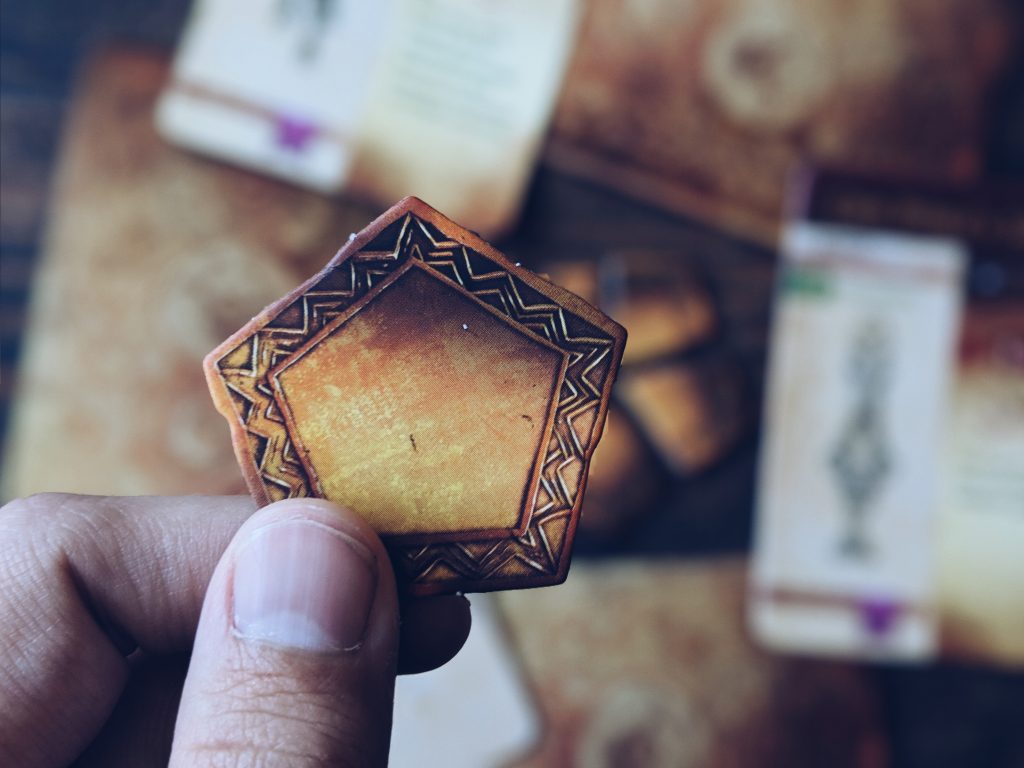
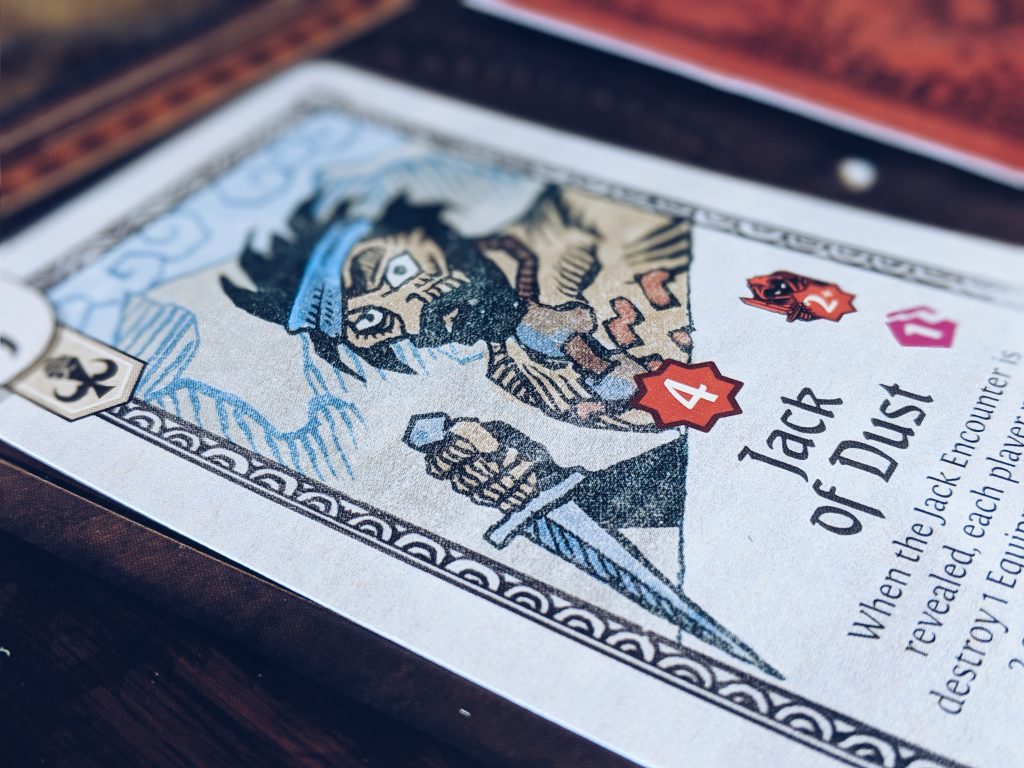
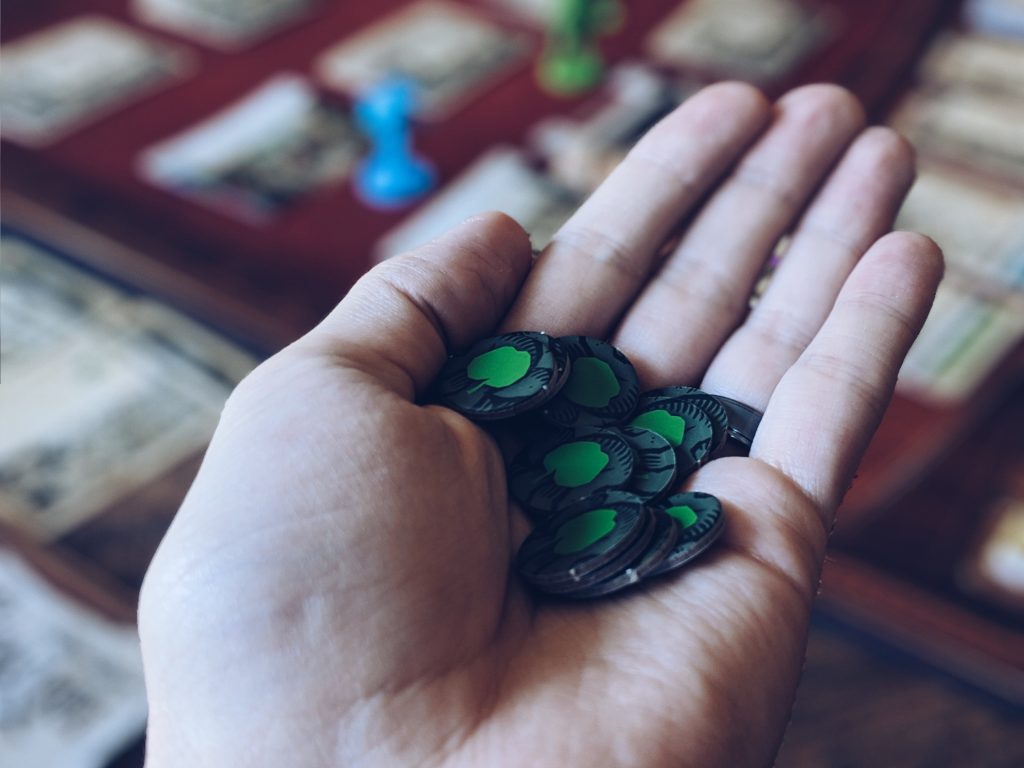
All things considered, Hand of Fate ordeals is a great deck builder paired with a fun, thematic adventure. This one will be especially good for existing fans of the series, but is a fantastic game even without that context. I haven’t had the chance to play with any of the expansion content, but I will say that both the competitive and campaign modes are very fun. If I have the chance to play the expansions, I’ll be sure to let you know, but until that time, Ordeals earns a spot on my shelf.
Review copy provided by Rule and Make
Publisher: Rule and Make
Number of Players: 1-4
Age: 14+
Price at time of Review: $40
If you are interested in making a purchase based on this review, please consider using our affiliate link. If you do, we will receive a small commission.

